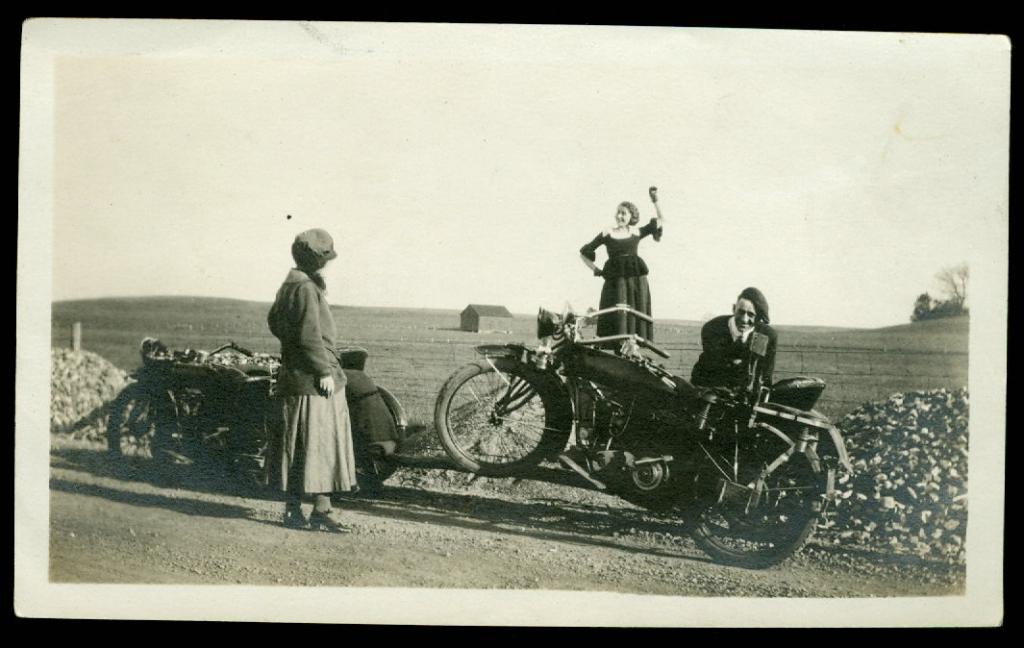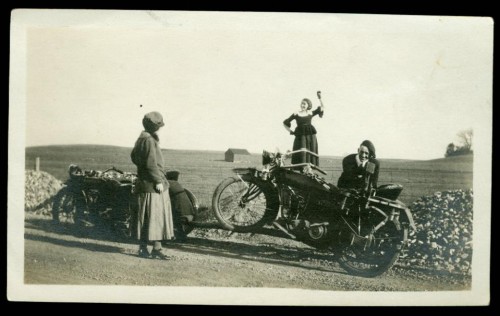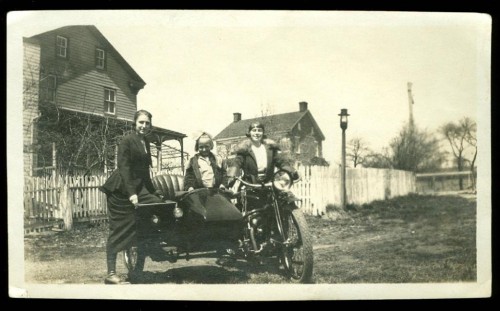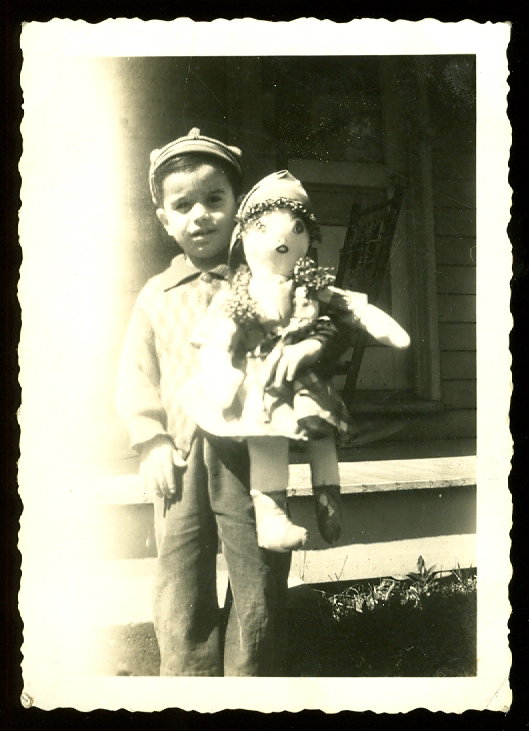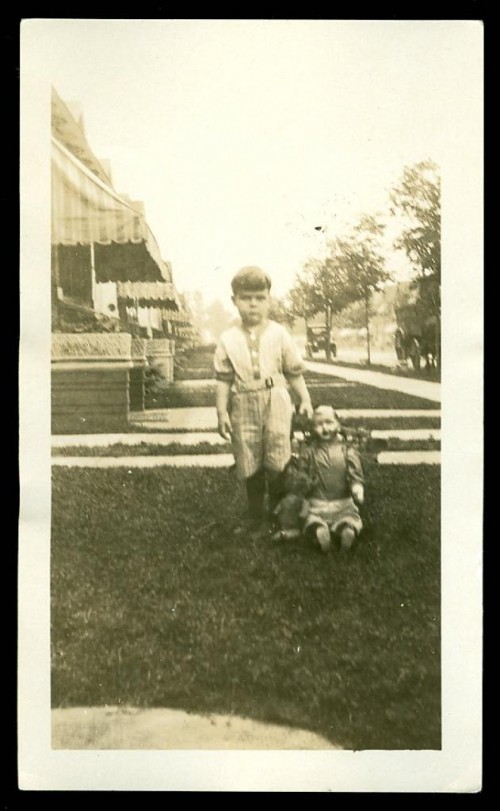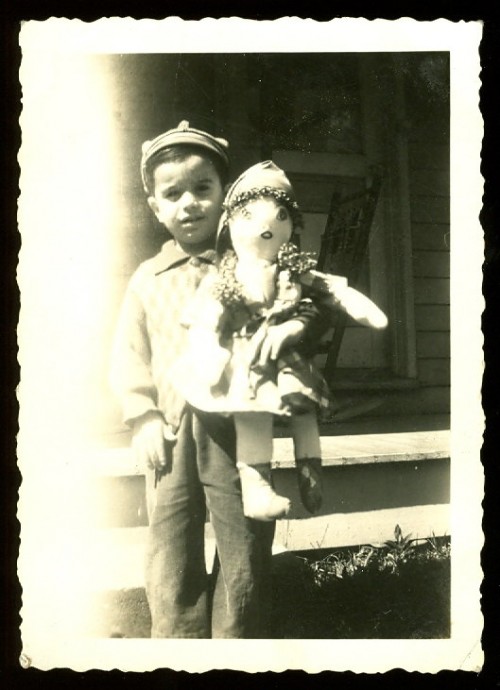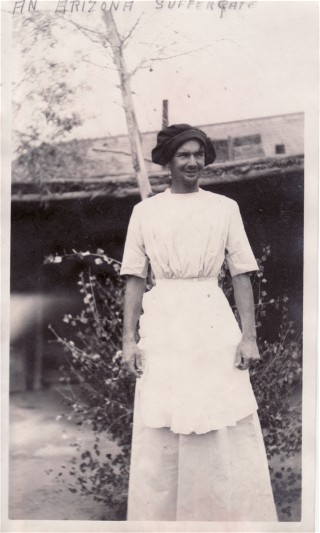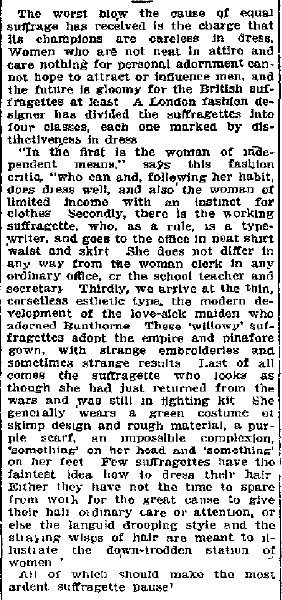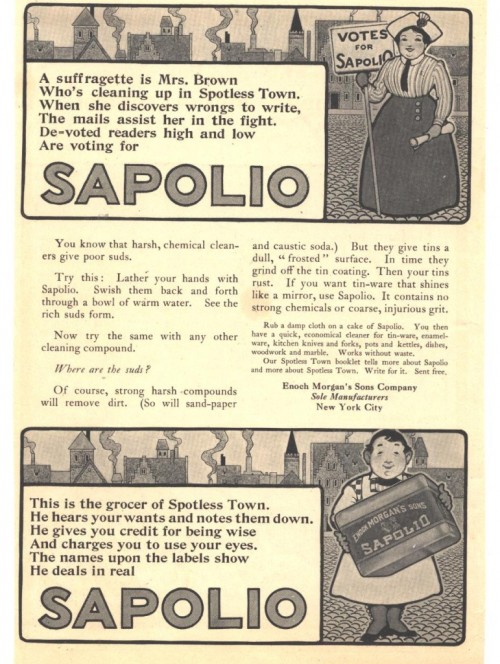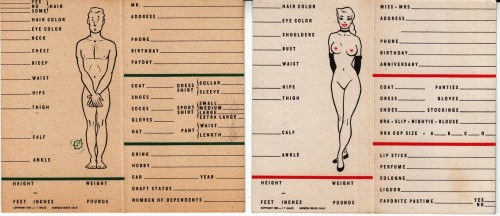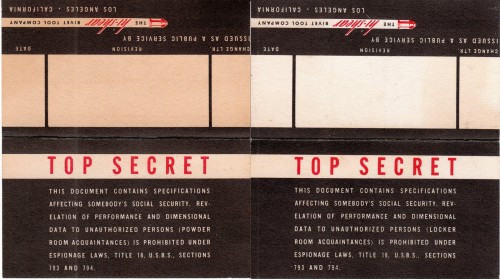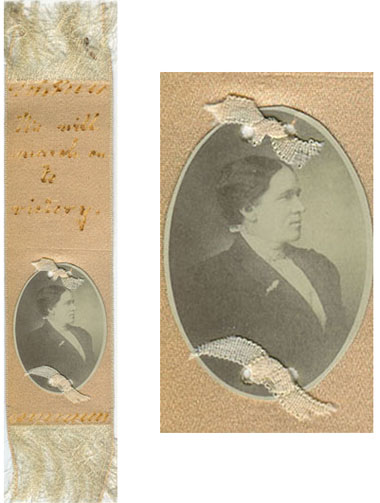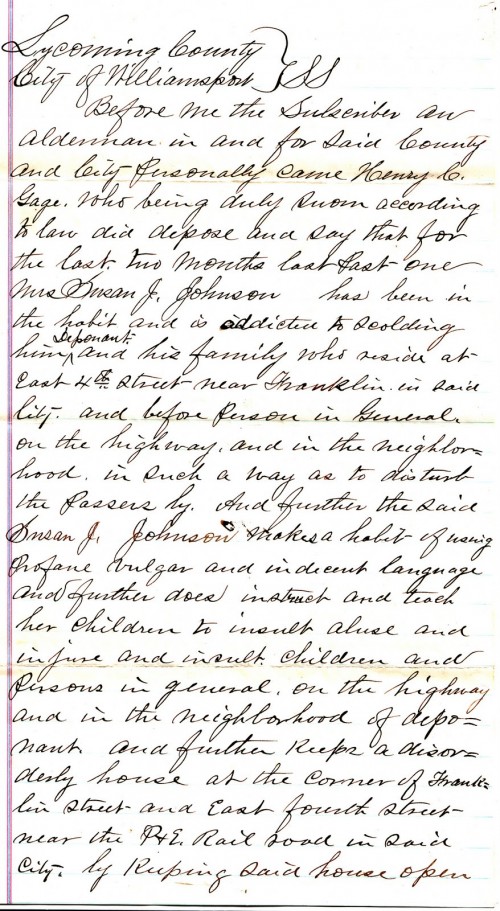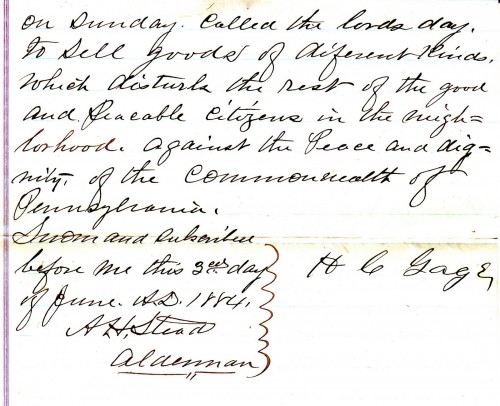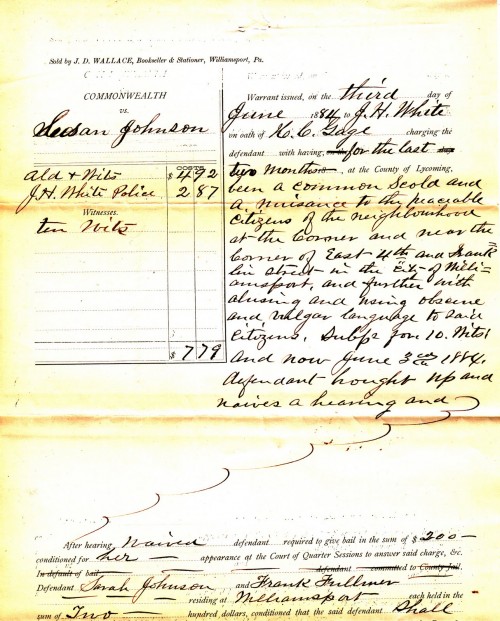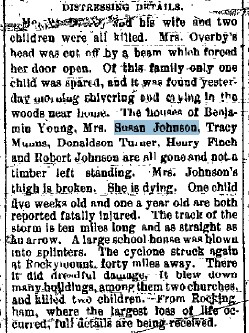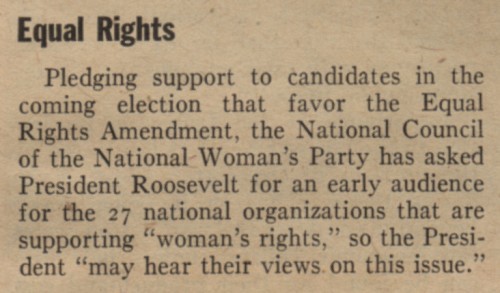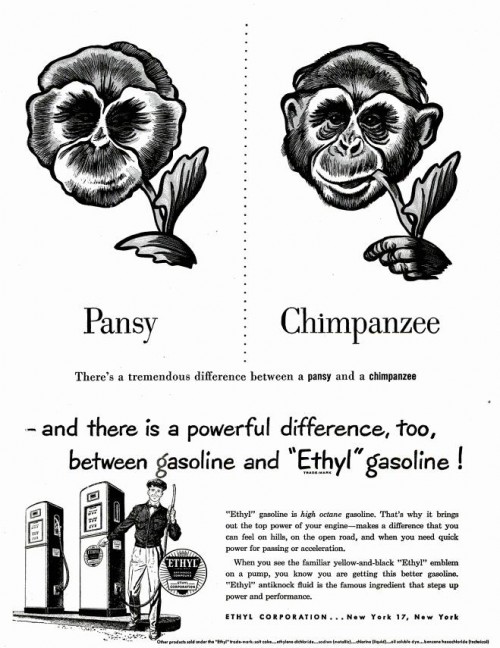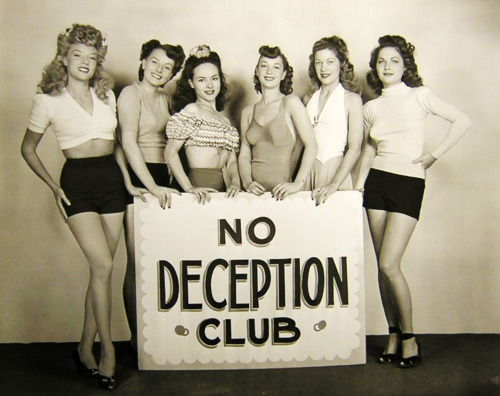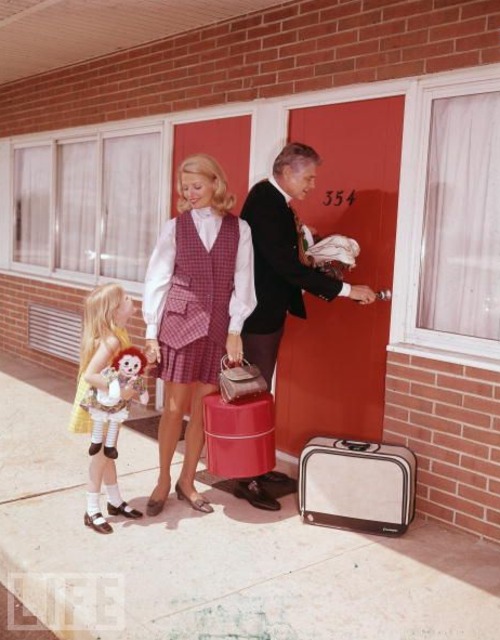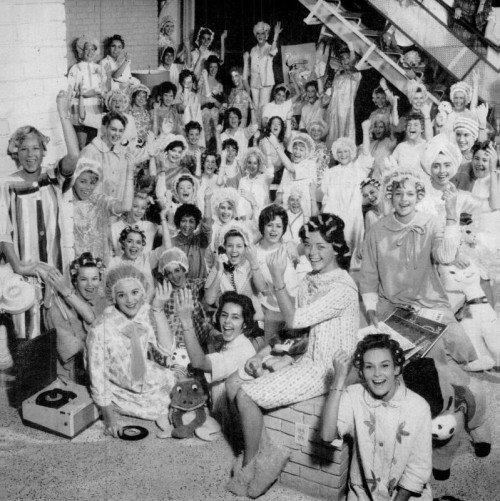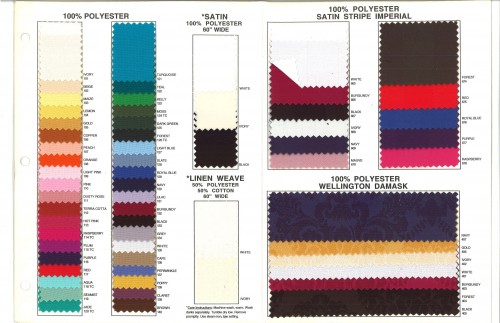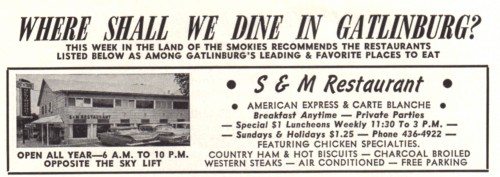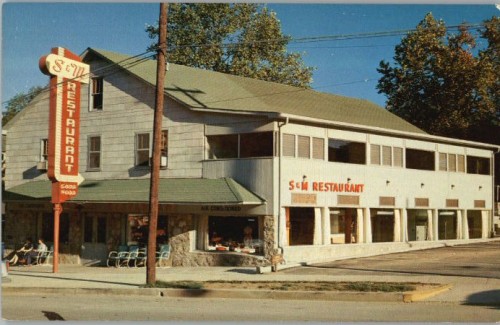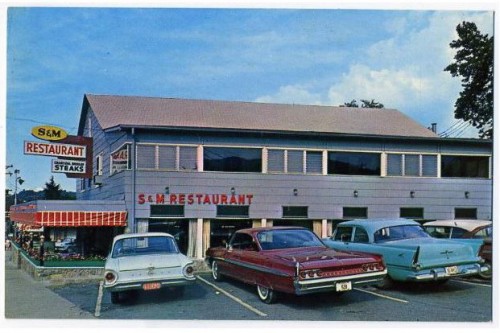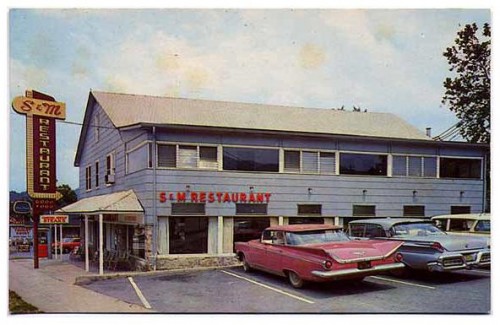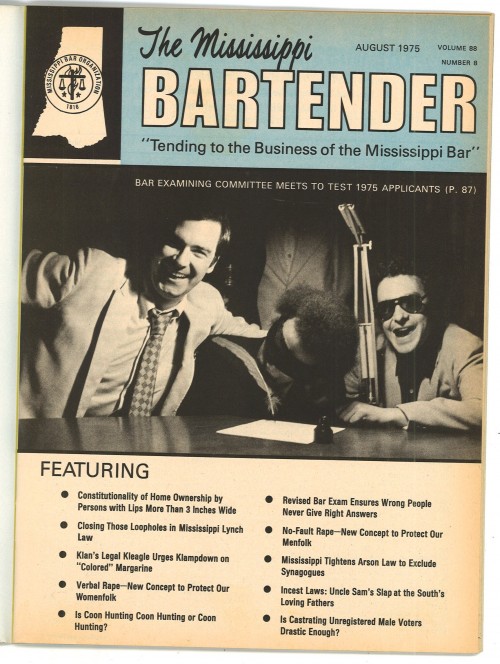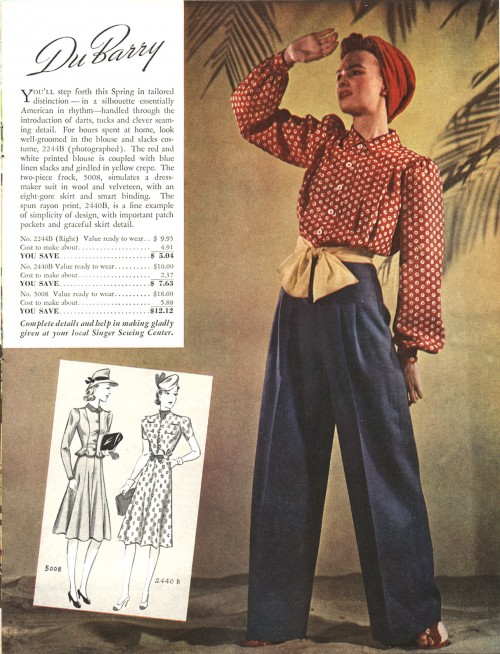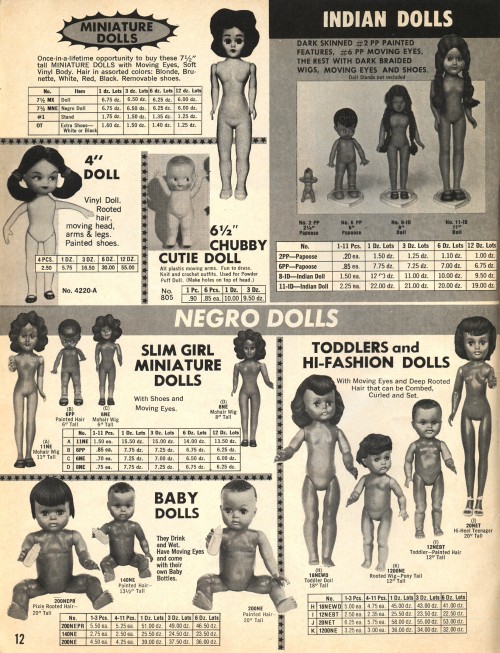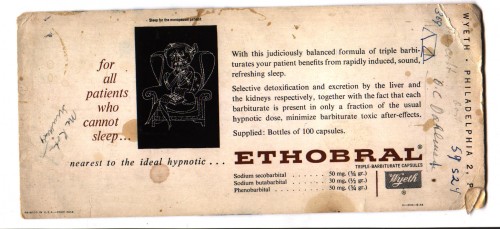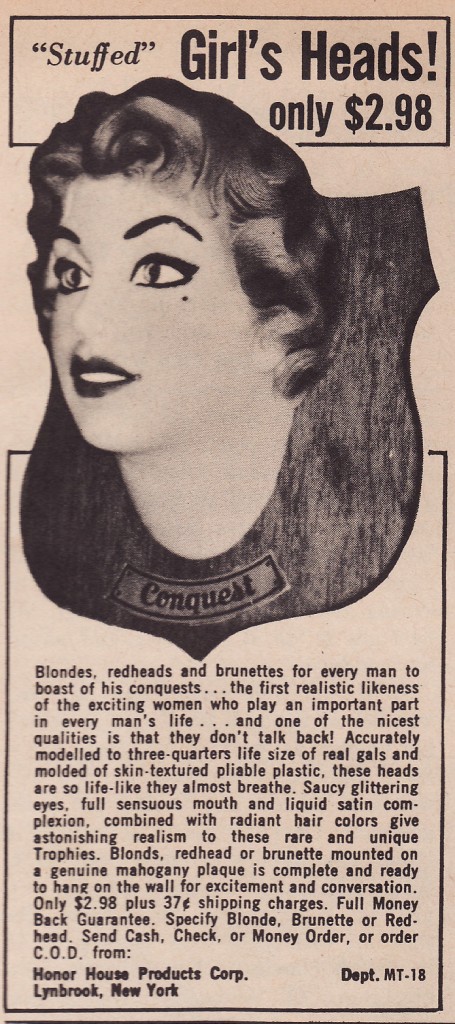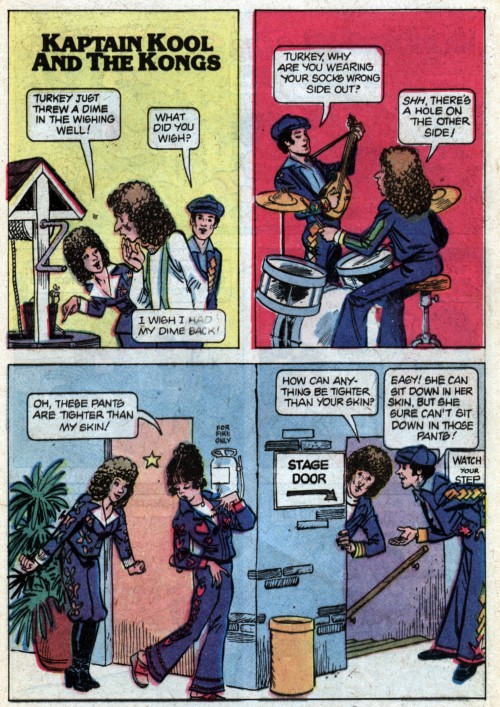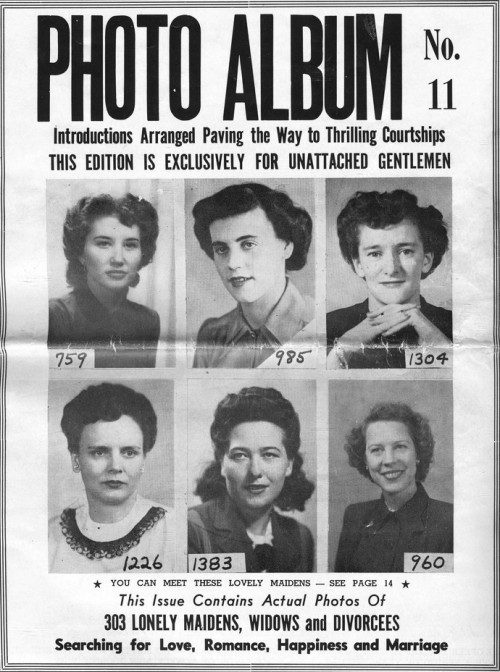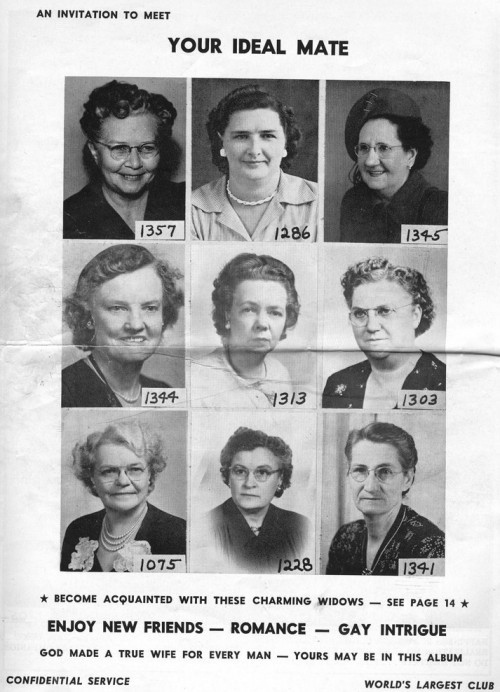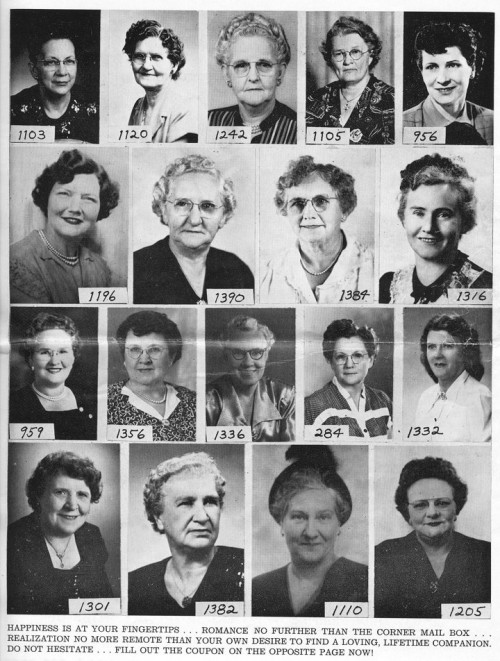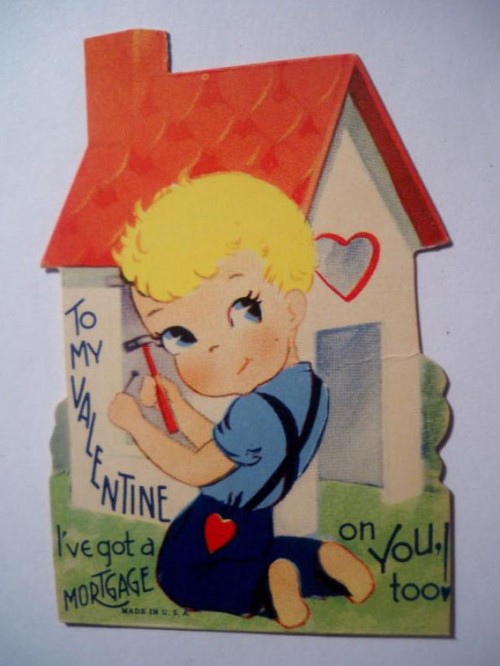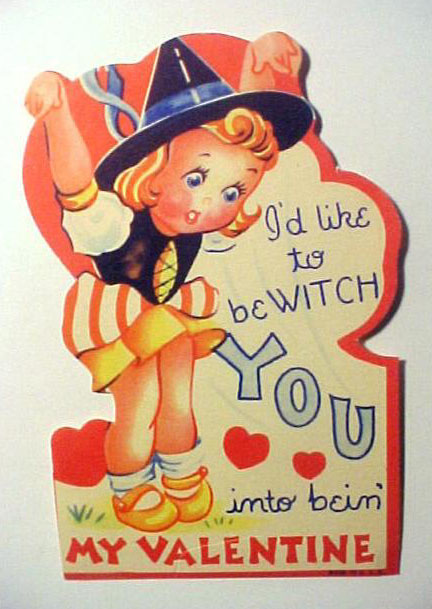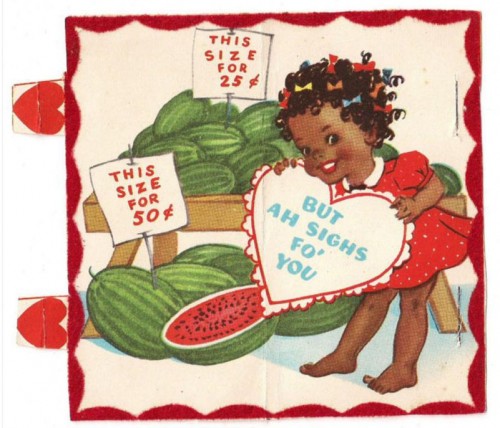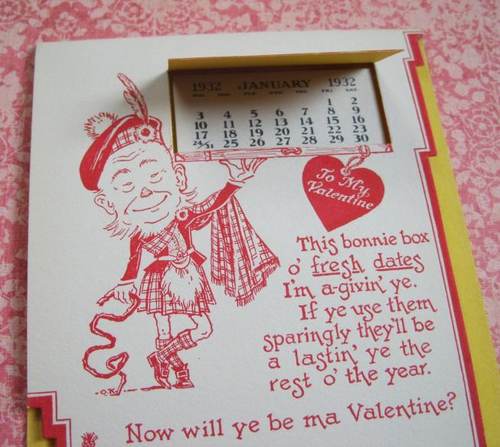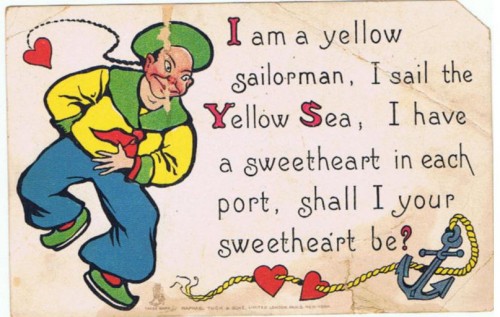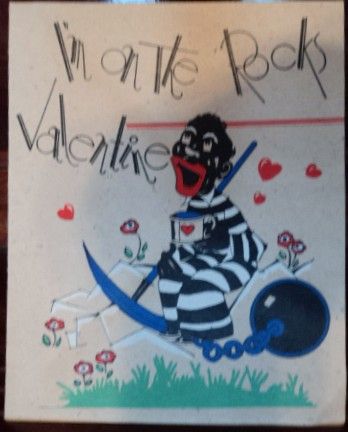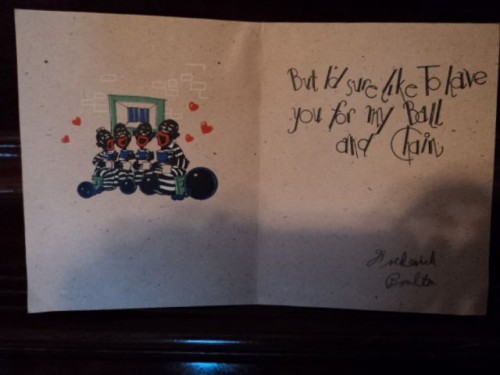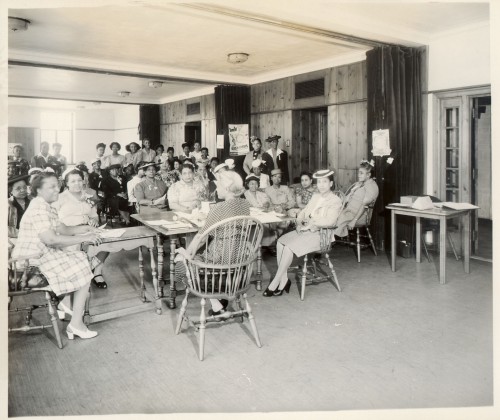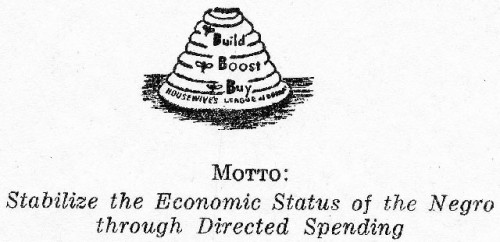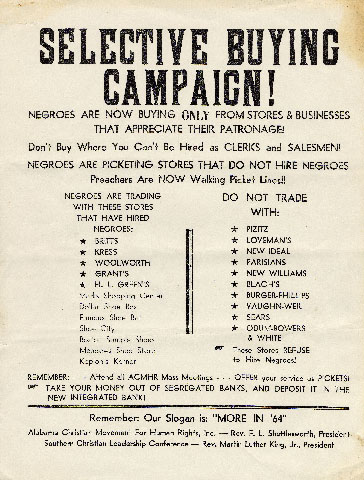Two photos from the 1920s featuring women and their motorcycles — vintage Indian motorcycles & sidecars. But the ladies don’t just sit in the sidecars. …Maybe little girls do. But not women. Photos via Lynnstudios.
Tag: ephemera
William’s Always Wanted A Doll
Remember William Wants A Doll from Free to Be, You and Me?
Well, William — and millions of little boys just like him — have wanted dolls through the ages. Some were lucky enough to have had parents who weren’t freaked out and let them have dolls. Some parents even took photographs of their boys with their dolls, like these from 20s and 30s.
Images via bondman2 @ eBay.
Of George Eliot & Marilyn Monroe
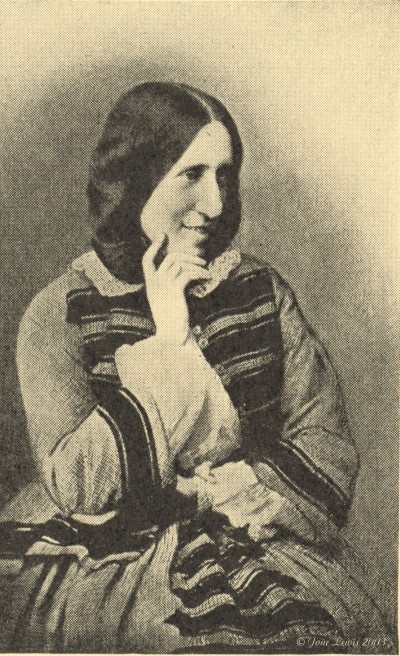
I am absolutely fascinated by Adair Jones‘s debate on the following question: “Was George Eliot’s late marriage a resignation from being a strong-minded woman?”
I haven’t read the works under discussion and, embarrassingly, my knowledge of George Eliot wouldn’t fill a thimble — but that doesn’t put an end to my opining. For it’s not the “did she or didn’t she” of the argument which has me most fascinated, but the “how” of it all…
Once there was a school of thought that held that autobiographies were superior to biographies; a person is the only one who really knows their own life, no amount of research can replace that. Along the way, the sub-genre of memoirs was created in order for a person to be able to tell a smaller story, the story of only a chapter or two in their lives as opposed to the whole story. Memoirs were greatly discredited in the whole Oprah-Frey fiasco. None of that memoirs stuff is of importance here; but memory is.
You see, I don’t remember things by dates. I have a linear concept of time, but dates are not my thing. And time itself passes unevenly for me — for most of us. My children, for example, grew up overnight despite those sleepless nights which I thought would never end. Time waiting for a child in a counseling appointment without a book vs. the same one hour appointment with a book, well, you know how that goes. And then there’s the matter of memory…
What I remember and what my husband remembers about things we’ve done, conversations held, etc. clearly exposes problems with perceptions. What I consider significant, he may not; and vice versa. And I, like many people I am told, often walk to the kitchen only to wonder why I went there.
Memory is a twisty thing.
So how reliable am I in terms of writing my autobiography?
I’m guessing not good at all.
So would the biographer be better?
I swore I wrote about (some of) this before, but I write so many places that if I did, I couldn’t find it; if I do find it, I’ll update with a link. [Note to self: you’re loosing your mind.]
But that is, in part, precisely what I’m talking about. If I were writing my own biography or memoir, I might just reference something I believed I wrote. And even upon being unable to produce it, would swear it was misplaced (or, if I’d grow even more paranoid, claim it was stolen). I’m that convinced I did it. Even if I hadn’t included that tidbit in my autobiography, some researcher pouring through my personal effects, correspondence I’d written over the years, etc. might just find that I’d penned a letter in which I swore that I had written on the subject. Perhaps I’d even accuse a person of the theft of it. This poor researcher / author would then have proof of my presumption, but not what actually happened.
And this is only one example which is far more cut and dried than other realities… The article or written work exists or it doesn’t; my faulty memory may be found out due to evidence one way or another. But what of my motivations?
What if I insisted I wrote something, knowing I did not, but wished to claim the work of someone else? What if I hated someone so much I convinced myself the story was true, could even pass a lie detector test because I, in fact, believed what I was saying? Maybe I did believe it so much because I was unable to be truthful with myself about my own actions?
We all tell ourselves lies everyday. Just to get through the day. Most of them aren’t so big and bad as accusing someone of theft. We usually don’t lie to hurt others but rather to protect ourselves. We lie to ourselves about the deeper things we cannot face, little and big vanities alike.
Whatever George Eliot aka Mary Ann Evans aka Mary Anne Cross writes to her friends she is also writing to herself. She has her reasons as much as her denials to motivate her. And so, even a historian with access to public and private works, letters and diaries, is still limited by the memories and motivations of their subject.
Did Eliot consider her last marriage an act of dependence? An independent or vain act that would ensure her legacy? Was it just easier to count on someone in her old age, easier to tell people that, or what?
Who knows.
It’s intellectual fun to pluck at the strings left behind, like clues leading to the the ball of yarn that is a hero’s psyche. But we don’t know. We cannot read their soul.
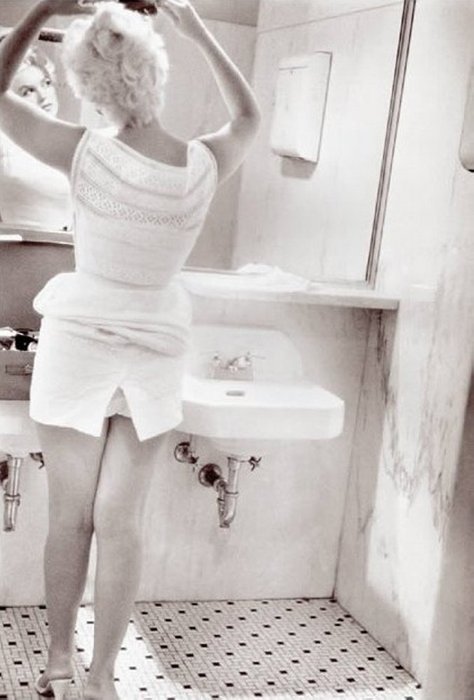
This is why we have so many biographies. Even after the memoirs and autobiographies (with and without the help of others), even after hundreds of other biographies, there’s still room for more.
Some people who count such things say there are 600 books on Marilyn Monroe alone — with new releases each year. Because she continues to fascinate me us. Forget the suicide-or-murder debate; forget the motivations, cover-ups, bungles, etc. of other people; we can never know what went on in Marilyn’s head or heart because no one, not even her contemporaries and confidants, knew that.
Marilyn and Mary Anne, and all the others, will continue to fascinate us because we will never ever know. We will never be truly sated by any “definitive” book on a person because we can never ever have the definitive answers.
Whatever the subjects of biographies and autobiographies leave for us, whatever they tell us, remains forever between the memory gaps, what they believed, the stories they’ve told themselves, what they believed they needed to protect when they told others their stories…
That is unsettling.
It’s a realization that we cannot ever really know anyone.
And so we continue to read, investigate, interpret, what we can. …Still hoping we will find The Truth.
Suffering A Man In A Dress For Suffrage
On the front of this 5 3/4 X 3 1/2 “snapshot,” which the seller says is circa 1915, someone has printed “AN ARIZONA SUFFRAGETTE.”
As I cannot handle this photograph, I am not certain of it’s age — but I am certain that the “suffragette” it is a man wearing a dress and apron. Something about the photo feels more modern than 1915… Maybe it’s just that men putting on dresses to mock women for being too masculine to be pretty, that equal rights for women is as silly as a man wearing a dress, that the whole thing is just too-too familiar.
How To Dress For Success: Suffragette Edition
In The Washington Post, November 1, 1909, an unidentified “London fashion designer” gets bitchy and judgmental about how suffragettes dress. Yes, even though I don’t know if this possibly fictitious designer is male or female, I say “bitchy.” For even should ye olde fashion designer be both real and male (gay stereotypes aside), the fact that this item appeared at all in the Society pages, is proof of the bitch factor.
But perhaps most importantly are the number of appearances of myths, stereotypes, and general mean spiritedness which are preyed and played upon today:
The worst blow the cause of equal suffrage has received is the charge that its champions are careless in dress. Women who are not neat in attire and care nothing for personal adornment cannot hope to attract or influence men, and the future is gloomy for the British suffragettes at least. A London fashion designer has divided the suffragettes into four classes, each one marked by distinctiveness in dress.
“In the first is the woman of independent means,” says this fashion critic, “who can can and following her habit does dress well, and also the woman of limited income with an instinct for clothes Secondly, there is the working suffragette, who, as a rule, is a typewriter, and goes to the office in neat shirt waist and skirt She does not differ in any way from the woman clerk in any ordinary office, or the school teacher and secretary Thirdly we arrive at the thin, corsetless esthetic type, the modern development of the love-sick maiden who adorned Bunthorne These ‘willowy’ suffragettes adopt the empire and pinafore gown, with strange embroideries and sometimes strange results Last of all comes the suffragette who looks as though she had just returned from the wars and was still in fighting kit She generally wears a green costume of skimp design and rough material, a purple scarf, an impossible complexion, ‘something’ on her head and ‘something’ on her feet Few suffragettes have the faintest idea how to dress their hair Either they have not the time to spare from work for the great cause to give their hair ordinary care or attention, or else the languid drooping style and the straying wisps of hair are meant to illustrate the down-trodden station of women”
All of which should make the most ardent suffragette pause!
Suffragette Soap Ad
This ad, for sale from MAINE-ARTEMIS, shows how products were marketed to suffragettes.
Enoch Morgan’s Sons Company ad for Sapolio cake soap:
A suffragette is Mrs. Brown
Who’s cleaning up in Spotless Town
When she discovers wrongs to write
The mails assist her in the fight
De=voted readers high and low
Are voting for
Sapolio
Vintage Gold Diggers, 1952
I’m sure this pair of vintage advertising pieces from/for the Hi-Shear Rivet Tool Company were intended to be humorous, in that oh-so-popular risque way of 1952; but I find them predictably insulting. It’s not that they’re nude — I collect vintage nudes and risque materials. Or even that “he” is allowed modesty while “she” wears the gloves and smile of a burlesque performer. (Frankly, as nearly every woman has noted in the Anthony Weiner affair, the less male genitalia seen the better.) But it’s what else is seen inside these “Top Secret” cards when they are open…
He has a number of dependents — dependents, not children; she has none.
He has a payday; she has none.
He has a car; she has none.
He has a hobby; she has a pastime — with places to check “yes” or “no”?!
*sigh*
Maybe women wouldn’t be seen as gold diggers if they had the opportunity to earn their own paychecks, own their own cars, not be seen as dependent children… Have a legitimate hobby even.
Both vintage pieces from the collection of Jim Linderman.
Antique Suffragette Bookmark
While interviewing Lauren Roberts about her bookmark collection (continued here), I found one antique silk bookmark most fetching…
Turns out this might just be a bit of suffragette history.
Lauren, can you tell me more about the Carrie Chapman Catt bookmark?
Oh, I loved this one! I bought it because it was beautiful. It is a soft cream-colored silk with delicate fringe on both ends. The woman’s picture is attached with silk ribbon that goes through the bookmark. The words read “We will march on to victory.”
When I first bought this I thought it was a bookmark made by a WWI soldier for his mother (or vice versa), and that it had her picture on it. I can’t remember how I came around to the idea that it might be Catt; perhaps the seller suggested it?
I searched out numerous images of Catt online but nothing like this ever showed up. Since it is a formal portrait it is impossible that it was the only copy of that image. Plus, the picture is of a woman likely to be in her fifties, and by that age she was certainly well known for her work. But the resemblance to Catt is startling. I sent it off the a librarian at LOC, and she agreed that it very much appeared to be her but since they could not find another copy of that image either they had no proof one way or the other.
The saying on it leads to me to wonder if it might in fact be Catt’s mother. The age is likely right since the clothing appears to be from the late nineteenth century. Could it have been an image of Catt’s mother when Catt was in the midst of the battle for women’s suffrage and she made this up for her mother as a kind of promise? If so, it is a very valuable piece of history, one of kind. But again I will never know, which is both sad and compelling.
Well folks, if you can help with identifying the portrait — or have any other information — please let us know! Post a comment here or contact Lauren. Thanks!
Punished For Parenting, Blue Laws, 1884
Jim Linderman presents this original court document from Williamsport in Lycoming County, Pennsylvania, dated June 3, 1884 in which Mrs. Susan Johnson was arrested and charged with being “addicted to scolding,” including the habit of using profane, vulgar and abusive language.” Given that, it seems obvious — or odd, depending upon your parenting views — that Mrs. Johnson also instructed “her children to insult, abuse and injure children and persons in general.”
At the bottom, or second page, of the court document, it is also noted that Mrs. Johnson dared to keep her business establishment open on Sunday, “the Lord’s day” — in violation of Blue Laws.
Me thinketh the open store, the audacity of a woman to make money on the sabbath, was the real problem.
But I’m a biased feminist.
In fact, without anything else to go on, I daresay Mrs. Susan Johnson was a strong woman, an independent woman with her own business. One who didn’t tolerate crap from anyone and was raising her children to do the same — in a time and place where women were like children and so should be seen and not heard.
But I have no proof of this.
According the arrest warrant, Mrs. Johnson had to pay bail in the amount of $200…
Despite my best attempts at research, I could not find any report of how the court story ends. However, it appears that poor Mrs. Johnson died shortly after tornadoes struck and leveled her house along with several others — “not a timber left standing” — according to a newspaper story in the Daily Gazette And Bulletin, Williamsport, Pennsylvania, on February 23, 1884. I can’t be absolutely certain this is the same Mrs. Susan Johnson, but it’s the only trail I could find. Rest in peace, Susan.
Equal Rights Status, 1944
A quick news item found in the May 1, 1944 issue of Pathfinder magazine; with links added by yours truly:
Equal Rights
Pledging support to candidates in the coming election that favor the Equal Rights Amendment, the National Council of the National Woman’s Party has asked President Roosevelt for an early audience for the 27 national organizations that are supporting “woman’s rights,” so the President “may hear their views on this issue.”
What Are You, A Man Or A Monkee? Or, Worse Yet, Gay?
“There’s A Tremendous Difference Between A Pansy & A Chimpanzee” …But both use gasoline?
Vintage ad for Ethyl Gasoline, found in a 1950 Life Magazine; via GeriADtric.
Women’s Pages, Then & Now
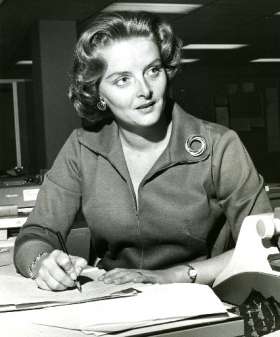
You know, by now, that I collect horde vintage magazines, publications, newspapers, and other ephemera. (If not, please send me your recipe for Denial Sauce; the anti-women politics of the time are hard on me.) So I’m completely smitten with Women’s Page History: “A blog devoted to women’s page editors beginning during World War II (when many women were hired by the newsrooms until the war ended) through the early 1970s when the women’s pages were transformed into lifestyle sections.”
Yummy!
The blog is run by Dr. Kimberly Voss, of whom I am more than a bit jealous… I long for some sort of credentials to make my piles of old paper legit. *sigh*
I know, I know; she has a piece of paper, I have a piece of paper. (As in degrees.) And I know that some would argue that (stupid) adage, “Those who can, do. Those who can’t, teach.” Let me say again how stupid that adage is — very.
But the word “professor” before your name has more than a cache — it has the clout that opens doors. As in getting your phone calls routed properly, messages and emails returned, etc. Of that, I am envious.
Of course, my biggest problem is not specializing — not narrowing my focus. (Watch comments at this post for a link from my other blog, Inherited Values, on that.)
Ooooh, what’s that glossy magazine cover there!
…Where was I?
On a related — to me, anyway — note, check out Jen But Never Jenn (who I met through a mutual fascination of vintage living). She made her sister and her future brother-in-law a magazine timeline as a “sense of what it was like NOW vs. THEN.” Amusing, yes. But also an awesome way to put your collection to good use.
Sign Of The Times: 1940s
I know what the sign is, where I found it, and that it’s likely circa the 1940s, but even though the sign reads “No Deception Club,” I have no idea what it’s for… Any ideas?
Have Hairdryer, Will Travel
This vintage travel photo is awesome on its own, but it’s also a culmination of many posts I’ve made today! (Hint: That means all but one of the the links are to my posts at other blogs. It will be like you traveling with me!)
Life magazine posted it at Tumblr, saying:
Hostel? Clean? Those two words in the same sentence? Wow, what a foreign concept for many of us— let’s take a trip back to When Hostels Were Clean (yes, once upon a time they were clean…)
We want to hear from you: tell us about your worst hostel experience.
I don’t think this is a true hostel; it looks like a motel. I would also accept the inaccurate use of hotel. But not a hostel. It’s not just my experience which says so; I look at a lot of (and post a lot) of vintage travel images. But in any case, note how mom has her portable hairdryer in hand. Americans probably wouldn’t bother to bring a hairdryer to a hostel… However, you would bring one before you bring a child.
Speaking of vintage hairdryers…
Traveling with one is preferred over packing your vacuum. Even if it can clean and double as a hairdryer.
Anyway, I’m lovin’ following Life at Tumblr (this is me at Tumblr, in case you wanna follow me there); I also posted this about Life’s contest tomorrow.
What Time Is It?
According to this ad for Bulova watches, it’s time for a pajama party. Circa 1963; via Simple Dreams.
Sign Of The Times: 1939
Don’t Mind Hitler: Take Your Holiday
Via Nationaal Archief:
Poster in a London travel agency advising people to book their holidays in spite of the tense situation in Europe (Hitler, Germany, the Second World War). About 1939.
Fabric Swatch Friday: Getting Freaky With Fabric Samples
Collector, hoarder — call me what you will. I prefer to be considered a curator, and a creative-type too. Which is why I can’t imagine throwing out just about anything (unless it is actually rotting; rotten is a subjective term, in my, subjective, opinion).
Via my favorite new blog, Visual Arts Library Picture & Periodicals Collections, proof that keeping old fabric sample swatches is a good thing, an inspiring thing:
Now, that doesn’t mean that through photocopying, scanning, or rendering their likeness with your hand that you cannot transform these textured colors and colored patterns into pictures, or otherwise appropriate their likeness for your own creative ends. In fact, this is all just an invitation to do just that.
So, go forth, collect, save, scan, etc. Create something. Maybe even backgrounds for your blog or website. Who knows? That’s up to you.
Vintage S & M Restaurant Ad
This ad from This Week In The Land of the Smokies and The Southern Highlands dated May 1963 (yes, for the month of May, despite it’s “This Week” title) is for the S & M restaurant in Gatlinburg. In case, you know, you’re traveling and looking for a place to stop and munch.
I’m not sure if this place still exists (let me know if it does), but here’s what it looked like:
And, because I am amused by such things, note in these two vintage postcards, how the similar the cars in the lot are. (The last one appears to be the color version of the photo used in the ad.)
Mississippi Paper Burning (Hot Vintage Magazine Blog!)
I’ve fallen in love with a newly discovered blog: Visual Arts Library Picture & Periodicals Collections, part of New York’s School of Visual Arts. And not just because David Pemberton, the Periodical/Reference Librarian who runs the blog, linked to my (obsessively detailed) post on The Mentor magazine, either. (Though I am a sucker for librarians and curators — and links don’t exactly hurt.) No, I’m in love with this new-to-me blog because of it’s content.
Sure, the visuals are great — as you’d expect from a visual arts school library. But it’s more than that. It’s the writing. Not just the historical context I crave, but the frank tone I adore. Such as the delightful description of National Lampoon Magazine as having “heaping sides of boob and toilet humor.” (I know I’m a fan of heaping boobs and even side-boob *wink* I’ve even succumb to toilet humor plenty of times.)
But the best part is the mix of selected offerings. Again using the National Lampoon post, look at this gem from the August 1975 issue:
Many of the magazines have embedded publications in them that parody other actual publications, such as this one that is supposed to have been put out by the state of Mississippi Bar Association featuring articles on “Closing Those Loopholes in Mississippi Lynch Law” and “No-Fault Rape–New Concepts to Protect Our Menfolk:”
I’m absolutely dying to read that! I bet most of the satirical messages are still relevant today. But then I love to read what I collect. …How else can I obsessively research it, over-analyze it, blog about it?
Yes We Can! Rosie The Riveter Fashions
Proof that this look was in fashion for women before there was an American home front and a The War Advertising Council’s Women in War Jobs campaign with Rosie the Riveter.
Scanned from New Fashions For You & Your Home, Spring Summer 1940, published by Singer Sewing Machine Company (I’ve listed it at eBay), this page features patterns by Du Barry.
More scans from this vintage publication at my Tumblr.
Still Using The Word “Negro” In 1977
In 1977 I was 13, and I know use of the word “negro” was a no-no. But here’s proof it was not only said by ignorant white trash folk, but used to peddle dolls, doll parts, etc. A page of from the 1977 Standard Doll Co. catalog featuring “negro dolls” — alongside “Indian dolls,” a term which is still bandied about far too often (but then Native Americans are the most overlooked people in our country — and that’s saying something).
Barbiturates Like Candy
I’ve been listing a lot on eBay, so be prepared for observations and odd thoughts on what I find — like this gem: a vintage medical advertising blotter for triple-barbiturate capsules by Wyeth called Ethobral.
“for all patients who cannot sleep…”
“nearest to the ideal hypnotic…”
What strikes me most about this promotional piece is the sexist ageism. First, note that illustration: A little old lady, complete with her hair in the “granny bun,” has what appears to be a box of open chocolates on her lap — and still she weeps.
Above that, in extra-fine print, “Sleep for the menopausal patient.”
We’ve all heard about the misogyny in medicine; we’ve all heard about the medicating of women for all sorts of “mysterious ailments” that men just don’t suffer from. And we all know about the giving away of barbiturates to women as if they were candy. But seeing this, seeing a “menopausal patient” — which can only be female — depicted as a crying grandmother trying to self-medicate, ineffectively and stupidly, with chocolate, as the only image on this advertising piece for medication “for all patients who cannot sleep” drives the point home like a railroad spike. To the chest.
Trophies For Misogynists
Vintage ad for wall-mounted female human heads reads:
“Stuffed” Girl’s Heads! Only $2.98
Blondes, redheads and brunettes for every man to boast of his conquests…the first realistic likeness of the exciting women who play an important part in every man’s life…and one of the nicest qualities is that they don’t talk back! Accurately modelled to three-quarters life size of real galls and molded of skin-textured pliable plastic, these heads are so life-like they almost breathe. Saucy glittering eyes, full sensuous mouth and liquid satin complexion, combined with radiant hair colors give astonishing realism to these rare and unique Trophies. Blonds, redhead or brunette mounted on a genuine mahogany plaque is complete and ready to hand on the wall for excitement and conversation.
Not a lot leaves me speechless. But here I am.
Found at The Immaculate Consumption.
Kaptain Kool & The Kongs On Gender & Fashion
From issue number two of The New Krofft Supershow comic (1978), deep insights into gender and fashion…
In panel two:
Turkey, why are you wearing your socks wrong side out?
Shh, there’s a hole on the other side!
‘Cuz men are stupid; they never change or replenish their socks — or underwear.
(Confession: I sit here right now, my bare toe sticking out of — wait for it! — my husband’s sock. Why? I am in need of purchasing more socks for myself. …However, it is so fun to say, “My toe is sticking out of hubby’s sock.” That’s how close we are!)
In panel three:
Oh, these pants are tighter than my skin!
How can anything be tighter than your skin?
Easy! She can sit down in her skin, but she sure can’t sit down in those pants.
‘Cuz women are stupid; they kill themselves for fashion.
(Confession: I wore tight Jordache jeans. They were tight… But obviously if I wore them to school or took a ride in a car, I could sit in them. …And I do recall that men’s jeans were just as tight. In fact, I vaguely recall it being some sort of a competition.)
PS Bonus points for the ironic “Watch Your Step” sign in the background of that last panel.
Once Upon A Time… Mail Order Girlfriends
Found at Chateau Thombeau, a lovely look at these pages from Photo Album No. 11, apparently a vintage dating help publication featuring “lonely maidens, widows and divorcees searching for love, romance, happiness and marriage.”
(And don’t those little numbers remind you of criminal booking photos?)
Without seeing the actual publication, it’s hard to say for certain, but it looks as if the “happiness at your fingertips” is based solely on the male reader’s reaction to a photo.
I don’t mean to be cruel or sexist, but if that’s the case, some of these women would only find happiness at their own fingertips; those grimaces are extremely unfortunate. But if they knew how to physically pleasure themselves, they probably wouldn’t have those frowns in the first place. Or probably care to be a mail order girlfriend or bride.
Yes, chemistry is important; but even Playboy has the model’s bio bit. Seems personality was even less important in this vintage mail order girlfriend magazine than in the fantasy fodder pages of men’s mags. Guessing from the photos, this wasn’t that long before Playboy would hit the stands.
I’m surprised head-shots alone were used. Even for the younger gals. How was a guy supposed to check out her breeding hips?
I suppose we should be thankful that this edition is “exclusively for unattached gentlemen.” …But then real gentlemen aren’t the ones to worry about.
And “this edition” is exclusive? That sort of begs the question about other issues…
Help For The Gold Diggers Of Victorian Times
A rundown of Victorian Atchison’s most eligible bachelors, as published in The Atchison Globe, January 6, 1885. Via Ye Olde News, a Tumblr site that actually does document where stuff comes from. (Yes, I Tumbl(r) from time-to-time.)
Ah, I love tracking old romance in newspapers — a la the Von Dewitz twits.
“To My Valentine I’ve got a Mortgage on you, too!”
Ah, yes, another reminder that women belong to men; we are so much their property, that you can woo them with that fact on a Valentine. (Vintage Valentine via kimmly.
Bewitching Valentine
This vintage Valentine kinda has the holidays all jumbled-together; but I love it. Via capwheel.
Be My Racist Valentine
It’s been a few years since I did a racist Valentine’s post, so I thought it was time for another.
Vintage Black Americana Valentine, complete with watermelon and poor puns, via sienna42:
You don’t need to know that the maker of this vintage Valentine (available via Vintage-Mood-Swings) is Klinker Kraft Kard, Los Angeles (triple “k”s are always suspicious to me, especially when this card was made in 1932) to note the poor stereotypes of the “frugal” Scots who “save dates” via a Valentine with a calender:
This vintage Valentine’s Day postcard from D-L-Antiques-and-Collectibles is not only offensive to Asians, but who wants to be just another girl in a man “ports” in?
This next one from lut20 is racist for sure — but the reference to “ball and chain” has me a bit confused… It sure could be sexist, but then there are only men on the card, so…
The History, Legacy & Power Of Housewives (And Woman In General)
I found this photo of a National Housewives League meeting Detroit, Michigan, in 1945 while researching the Organized Housewives, a completely unrelated group.
The National Housewives’ League of America was founded in the early part of the twentieth century to advance the economic status of African Americans. Its mission was to encourage African American housewives to patronize African American-owned businesses through “directed spending.”
The Rev. William H. Peck and his wife Fannie B. Peck, after hearing Alben L. Holsey of the National Negro Business League and Tuskegee Institute speak about the successes of the Colored Merchants Association and the New York Housewives’ Association, were inspired to create similar organizations in Detroit. Rev. Peck organized the Booker T. Washington Trade Association in April 1930. Mrs. Peck, believing that the support of those women who controlled most household budgets — housewives — was essential to any business success, founded the Housewives’ League of Detroit on June 10, 1930, with 50 members. In the next couple of years, Mrs. Peck went on to organize leagues in Cleveland, Cincinnati, and Toledo, Ohio; Indianapolis, Ind.; Pittsburgh, Pa.; Kansas City, Mo.; and Jacksonville, Fla. By 1932, Alben Holsey, impressed with the response of the women in the leagues, invited Mrs. Peck and the other league representatives to meet in New York City to form a national committee, which Mrs. Peck chaired. The following year, the national committee met in Durham, N.C., in concert with the National Negro Business League, and formally organized the National Housewives’ League of America, Inc. Mrs. Peck was elected the first president of the organization.
I find this notion of housewives, and the purchase power of women in general, quite incredible… Normally we only hear of the economic power of those who control most household budgets in terms of boycotts, not as positive actions and long term change-making acts too.
Some related facts on the economic powers of women, which I heartily suggest you use to best impact social and economic change along with your household budget:
From 2005 Wow! Quick Facts Book, published by United States Census Bureau:
* Women control 80 percent of household spending
* They make up 47 percent of investors
* Women buy 81 percent of all products and services
* They buy 75 percent of all over-the-counter medications
* They make 81 percent of all retail purchases
* Women buy 82 percent of all groceries
* Women sign 80 percent of all checks written in the United States
* They make up 40 percent of all business travelers
* They make 51 percent of all travel and consumer electronics purchases
* Women influence 85 percent of all automobile purchases
* They head up 40 percent of all U.S. households with incomes over $600,000
* They own 66 percent of all home-based businesses
* Women have been the majority of voters in the United States since 1964
For more information on the history of the Housewives League, see Housewives League of Detroit (HLD) and the records at Bentley Historical Library at the University of Michigan (where the images are from).
